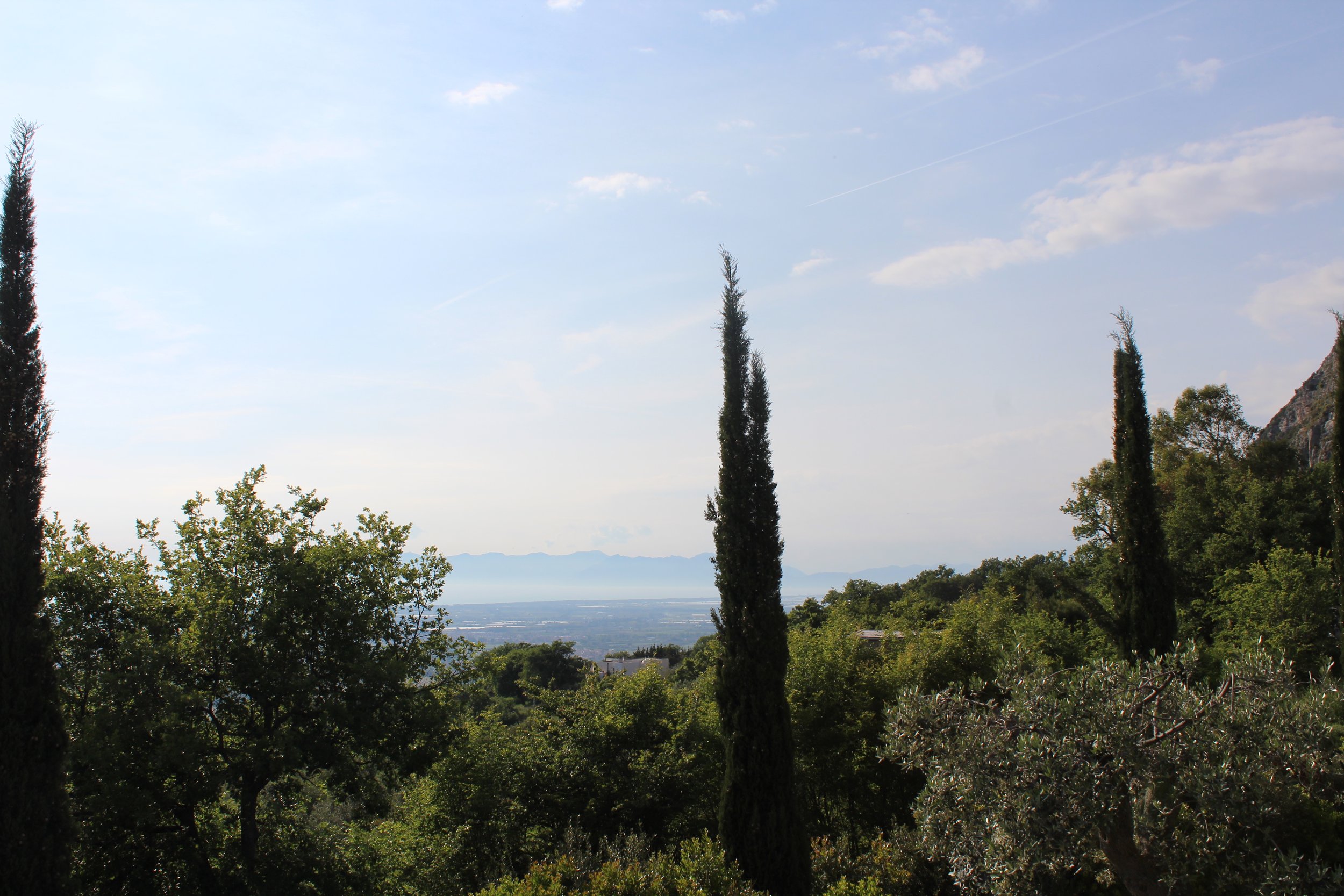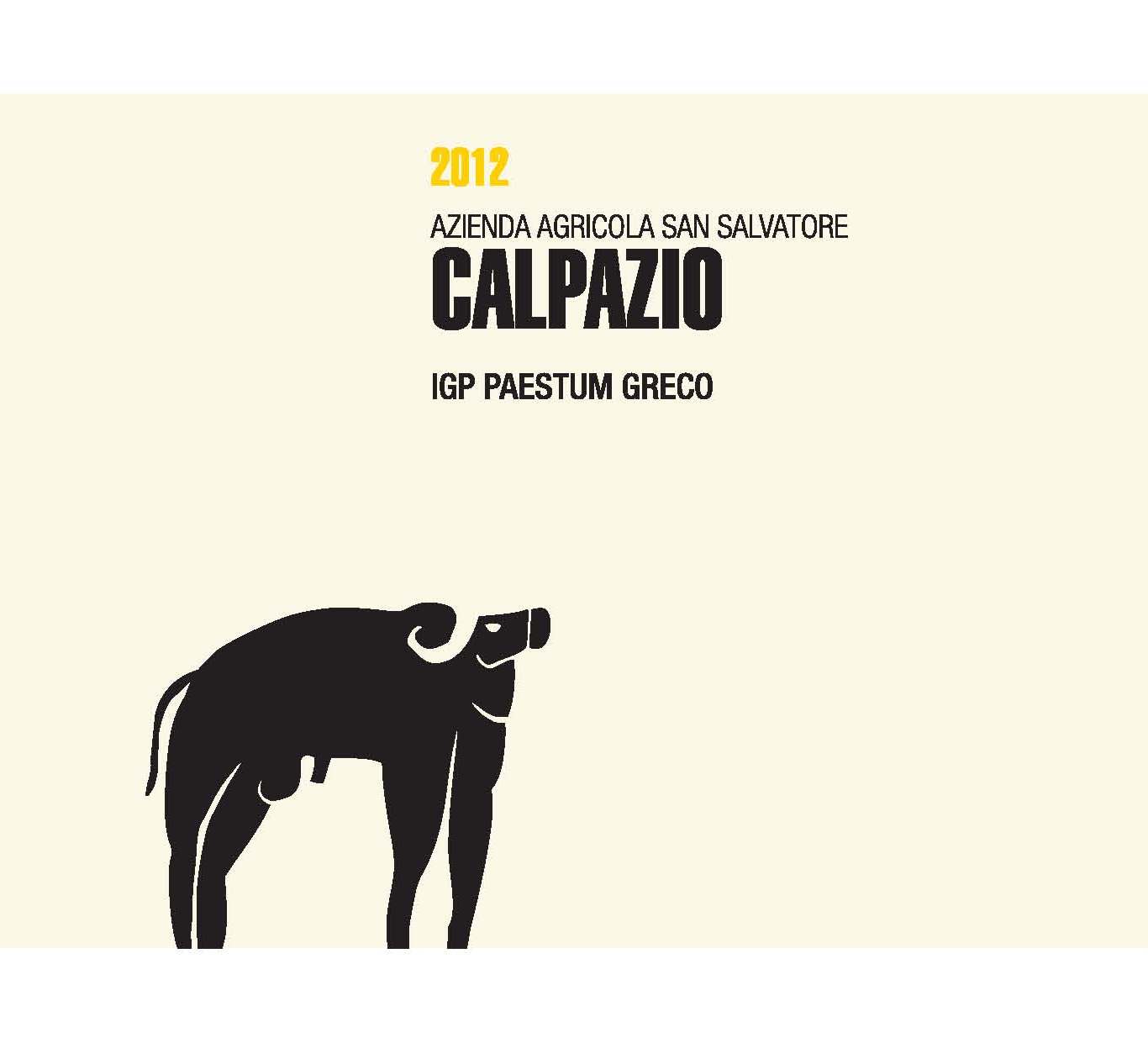Why You Should Drink Cilento Wine Right Now
By Christian Galliani, Feast on History wine director and wine tour leader
In my nights on duty at Del Posto and as lead sommelier at Tarry Lodge, I was invariably asked for the “diamond-in- the-rough” or “hidden gem” on our wine lists by guests of all types. Everyone wanted to find the “next big thing” as well as the “deal”. Invariably I would recommend Campanian wine, specifically wine from the Cilento, a sub-region of Campania along the coast, east of Amalfi and south of Irpinia.
Cilento has all the traits of a quality wine region as well as the pedigree. The ancient Greeks brought wine to the area and three massive temples from their colony remain on the nearby plains at Paestum. The wine varietals produced in the area are all direct descendants and the land is blessed with abundant sunshine, volcanic soil, varied elevations, and proximity to the Tyrrhenian sea.
October 2015 tour guests explore the Greek temples at Paestum.
Best of all, local winemakers respect proper wine making traditions, but aren’t afraid to innovate. The wineries are small and most of the wine produced there is estate grown, and in the case of San Salvatore, one of my very favorite vineyards, all 100% organic and biodynamic. These wines are made with love, and more importantly, pride.
Founded in 1988 by Giuseppe Pagano, San Salvatore is located in the middle of the insanely picturesque Cilento National Park. Located between the towns of Paestum, Stio and Giungano San Salvatore's land has become a space where a community has been built on the strength of wines that are both a love letter to the land and a culmination of over 2,000 years of viticultural evolution. San Salvatore is the wine we most often serve with dinner at Borgo La Pietraia, our family’s agriturismo located right below San Salvatore’s property in Cappacio-Paestum as well as a stop on our luxury food and wine tours.
The view from San Salvatore overlooking the Tyrrhenian sea
This mountainous region has a high level of biodiversity and the soil is rich in minerals. The influence of the nearby Tyrrhenian sea and nearly perfect sun exposure help to create an ideal microclimate for winemaking as I mentioned previously.
Having breathed the same fragrant air in the morning and felt that same warm sunshine, one imagines almost wistfully that it must feel good to be a grape vine or a buffalo in this setting. Free to grow and take in the landscape without a care in the world.
Suites at Borgo La Pietraia in between the sea and the Cilento National Park.
San Salvatore is deeply committed to preserving the beautiful environment of the Cilento National Park. The compound is a model of biodiversity and innovative biodynamic farming techniques employed to produce both their award winning wines that grace the wine lists of Del Posto and A16 and DOP buffalo mozzarella enjoyed the world over. They make use of their 270 acres as follows:
The vineyard takes up 58 acres and the different varietal vines are planted at differing elevations (from 656 to as high as 1968 feet ASL).
There are 9.8 acres of orchards on the property, 82 acres devoted to vegetable farming, 54 acres of woodlands, and 24 acres of olive groves.
There are also 450 head of buffalo that roam the property and supply the only fertilizer used, along with producing the milk for mozzarella production.
They take a special interest in cultivating the vineyards without synthetic yeasts or genetically modified organisms. San Salvatore also favors biodynamic preparations like horn dung, a labor intensive process of fermenting fertilizer underground in cow horns during the winter months to create a nutrient rich humus or top soil.
View of the Tyrrhenian sea from Capaccio, doorway to the Cilento National Park.
Vines are also protected from pest and disease with the careful use of copper and sulphur. San Salvatore also has a photovoltaic plant and employs 7,534 square feet of solar panels. Their total production is about 150,000 bottles, all told.
San Salvatore focuses on keeping wine varietally correct, that is letting the wines taste closest to their natural flavor by avoiding extraction, over oaking, or any of the other tricks that artificially change the flavor profiles of specific grapes. Or to put it another way, they don’t produce Aglianico that is manipulated to taste like a California Cab.
Every wine vinified inside this breathtaking, ancient space is unique and receives a specific fantasy name and logo. They fully express the diversity of all the indigenous varietals available in Campania: Fiano, Greco, Falanghina, Aglianico, and Piedirosso
Calpazio Paestum Greco wine label
Monte Calpazio from Borgo La Pietraia
From their minerally “Joi” Greco Spumante rose, to their award winning Jungano Paestum IGP (soon to be a protected DOC area) Aglianico, each wine is unique, and supremely nuanced, balanced, and pleasing to novice wine lovers and sommeliers alike.
If you are a lover of Nebbiolo, you know that wine geeks have long dubbed Aglianico the “Barolo of the South" due to its tannic structure, body, nuance, and ridiculous aging potential. The main difference is the price. A bottle of Jungano will cost you roughly €15, where a comparable single plot Barolo will run about €70.
So while I admire other Italian wine regions, (to say nothing of my outright adoration of France) I must admit that when pressed for my best “value wine”, it's not even close. Cilento wins by a buffalo.







